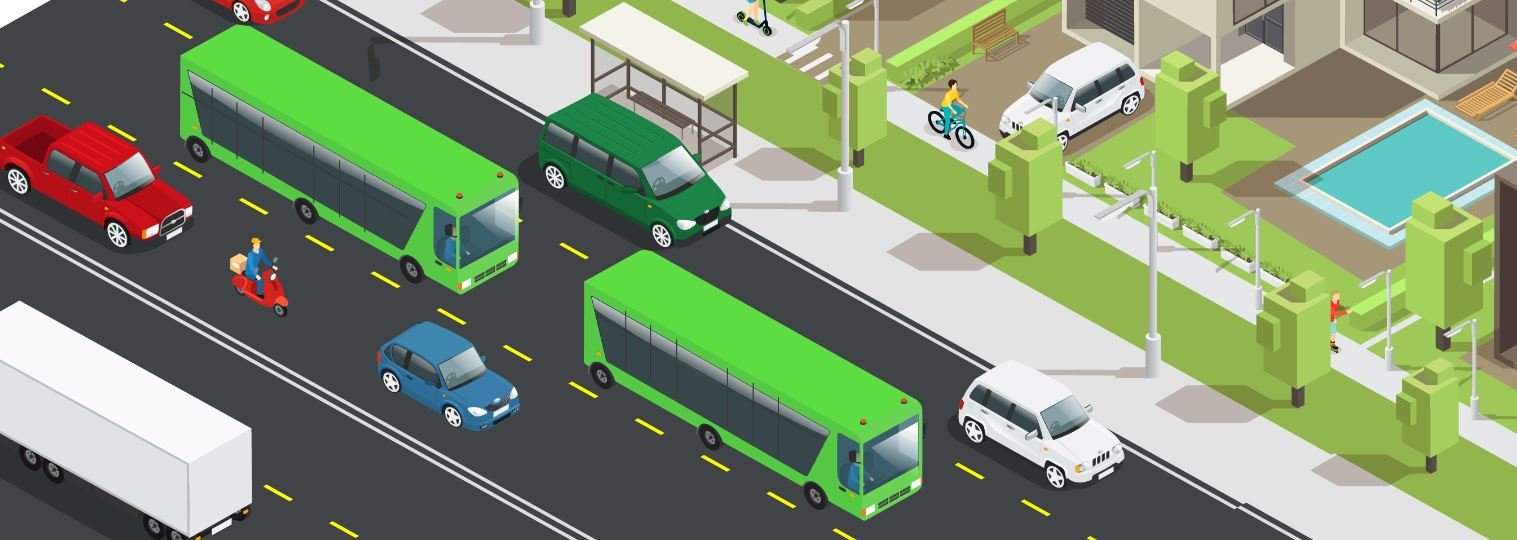BRT Corridor – From the Lens of Process Management

BRT Corridor – Imagine you are a city planner who has to improve the public transport system. Your ultimate goals would be to generate the local economy through it, manage traffic, and give a safe and reliable transportation system to the public.
The first thought that you may have is to start an underground metro system. But the catch is, you don’t have enough funds to construct an underground metro system.
So, how do you incorporate a system that is efficient as a metro system but doesn’t require much investment? This is the dilemma Jaime Lerner faced in the early 70s. Lerner was the mayor of Curitiba, the southern city of Brazil. He was the one who came up with the solution to all these by formulating a system that was as productive as a metro transportation but, at much cheaper expenses. This system was called the Bus Rapid Transit (BRT).
This BRT system was even cheaper than a tram or a subway!
The problems people faced before the introduction of BRT :
Buses were generally seen as the poor cousin of subways or trams. They were known for their unreliability, hovering traffic, and were slow since they stop so frequently. The most frustrating thing about them was their impermanence. You could have literally found your perfect bus route today, and the next day you figure out it doesn’t exist anymore.
How BRT solved these problems:
- BRT provided separate bus lanes so, no intermixing of traffic happens. This solved the problem of both unreliability and traffic congestion.
- They are given priority at the local traffic lights grid junction. Due to which buses didn’t need to wait unnecessarily for the signal to be green.
- Their frequent stopping points were reduced. Now, the bus stations were made with proper names. This ensured convenience for the public as identification of the bus stations became easy.
- Some cities even built route maps just like metros! For better accessibility of the BRT network.
Bus Rapid Transit (BRT) has solved problems in many big cities and claims a lot of success stories. Seeing these benefits, even Delhi tried to incorporate it into its system a few years back. Unfortunately, BRT was a complete disaster here.

Why A System that Worked Wonders For Other Big Cities Failed In Delhi?
BRT is a huge success in big cities like, Las Vegas, Ohio, Istanbul, etc. But it failed miserably in Delhi! This made us wonder what could be the possible reasons for its failure in Delhi?
We did some research and found out the following bottlenecks in Delhi’s approach with BRT:
1. A mismatch between Capacity and Planning
According to a report presented by NGO Nyaya Bhoomi, Delhi had 23000 buses and 73 lakhs other vehicles. On an average, only 3,000 buses, 35,000 cars, and 40,000 two-wheelers used the BRT every day. This impractical solution planning was highlighted as the first major bottleneck.
A solution plan requires an in-depth knowledge of ‘As-Is’ and ‘To-Be’ System. Our rush to design a new system without analysing or overlooking the ‘As-Is’ system, will neither lead us to a reasonable ‘To-Be’ System nor a sustainable solution. It is essential to have a system that gives us a complete understanding of the ‘As-Is’ System as well as the ‘To-Be’ System. That should include clear insights about the current capacity and, the desired capacity for the solution.
2. Failure in integrating with other systems.
BRT corridors require a designated lane for public buses. This was planned, designed, and deployed. It means the rest of all other vehicles were pushed for the remaining lanes.
“Mura” is a Japanese word that means, “Unevenness”. When the capacity of the two workstations is different, you will find waste in the form of “waiting” time. The balancing among all processes/systems is critical to ensure that we do not create a bottleneck or constraint in the system.
In order to solve one problem, we should not create new problems. Unfortunately, BRT couldn’t fulfil these standards in Delhi.
3. Non-maintenance of Smooth and Continuous Flow between processes
One of the basic assumptions during the implementation of the BRT corridor was uninterrupted services and systems. But buses were poorly maintained; driver skills were questioned most of the time.
One breakdown or an accident made everything stand still. During such incidents, even public buses were pushed to drive in the non-BRT corridor.
Efficiency improves when there is no break in the system. Sadly, here the whole system collapsed.
4. No Clarity of Roles, Responsibilities, and Governance
BRT corridor was designed for public transportation, but when long queues became a routine process, it pushed the public to start using the same lane. A petition was filed in High Court to allow cars and autos to use BRT corridors.
Later, High court gave a green signal to use the BRT corridor. But this decision allowed only a specific part of the complete corridor on an experiment basis. This became furthermore challenging as, some parts of the corridor started to use by all, while others were not. The entry and exit became another new problem area.
5. Inefficient Control Systems
There were 4 major intersections and very expensive smart signal systems. Even these systems failed to maintain and coordinate the traffic. We need integration of right process controls / KPIs in our business systems as well. And, these should align with overall business objectives monitored through balance scorecard objectives.
Conclusion
The main reason for the epic fail of BRT in Delhi was our lack in process management and implementation strategies. We failed to recognise that any big strategy can be implemented only by defining the processes correctly and managing them adequately.
The three major challenges of Delhi that came into light were: Architecture, Measurement and Governance as part of the problem. BRT corridor couldn’t overcome these challenges.
For any strategy to be successful, taking the right steps at the right time is essential. If you agree with our thoughts or have any related stories to share with us. Feel free to connect and write to us.
And, if you don’t want your business to fall like the BRT system in Delhi, then you must take action now and adopt efficient business process management approaches.
Take Action Now and Make a Difference
Feel Free To Contact Us for Further Information







